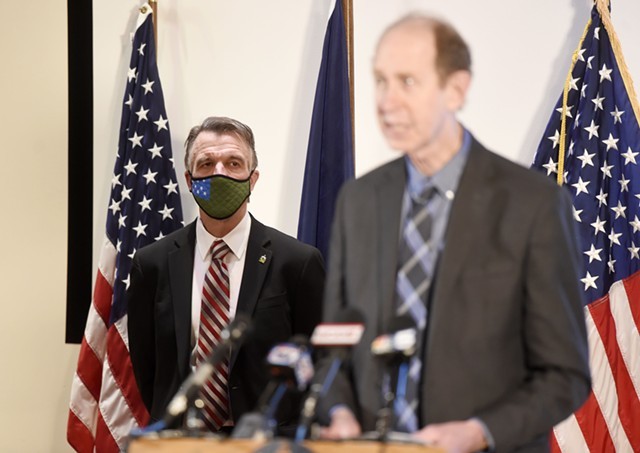
- File: Jeb Wallace-Brodeur
- Gov. Phil Scott and Health Commissioner Mark Levine at a previous briefing
With the B.117 COVID-19 variant causing cases to rise in 30 states, Vermont’s virus totals are looking similar to those of January, when the pandemic reached its peak. But the risks are very different now, state officials said on Tuesday at one of their twice-weekly COVID-19 press conferences.
More than 200,000 Vermonters have received at least one shot of COVID-19 vaccine, leading to fewer deaths and hospitalizations than during January, said Mike Pieciak, commissioner of the Department of Financial Regulation. Pieciak, who is in charge of modeling COVID-19 numbers for the state, said only about 9 percent of recent cases in Vermont are among people 60 and over — the group most at risk of serious complications from the virus.
Despite that good news, the state on Friday reported 255 new cases, the highest daily count since the pandemic began. The numbers have eased up only slightly since: 122 new cases on Saturday, 238 on Sunday, 173 on Monday and 73 new cases on Tuesday.
Case numbers have risen 53 percent among people in their twenties in the last month, Pieciak said, the group that will be eligible last for vaccinations. Vermont's positivity rate has risen to 2 precent, and the death count now stands at 225, with 25 people hospitalized.
There were also six outbreaks reported at long-term care facilities. Pieciak noted that the average size of those are now five people, compared to 38 per home in January.
The state has been vaccinating the population in age bands since December, starting with the oldest Vermonters and working its way down. On Monday, registration opened for people 50 and over, and Pieciak said 21,000 people from that group had registered by Tuesday.
On Wednesday, adults who are caring for children with special medical conditions will be able to register for vaccines, whatever their age. And on Thursday, any Vermonter over age 16 who is Black, Indigenous or a person of color can register, along with their family members.
Just 20 percent of those Vermonters have been vaccinated against COVID-19, compared to 33 percent of non-Hispanic white Vermonters, Health Commissioner Mark Levine said. BIPOC Vermonters have nearly double the risk of complications from COVID-19 that require hospitalization, he said.
“It is unacceptable that this disparity remains for this population,” he said.
Another change in policy: The state will allow hospitals to accept visitors, as long as the visitors can present evidence they are fully vaccinated, Pieciak said.
Of particular concern to state officials is the the vaccination rate in Essex County, which is around 14 percent — well below the rest of the state. Orleans County and Rutland County are also below the state average of about 20 percent. The state has erected highway signs in the Northeast Kingdom encouraging vaccinations, and Levine said mobile clinics might be next.
“We’re keeping an eye on that and trying to figure out what's going on,” the health commissioner said.
The state is also trying to reach homebound Vermonters, many of whom have received their shots from home health agencies. Human Services Secretary Mike Smith said officials have asked hospitals and primary care providers to help them find those Vermonters.
“And then we just said, ‘Please call,’” Smith said of others who aren’t on any list. He added that the state has vaccinated 3,000 people at home, though there is a backlog in Chittenden County. “We have the capacity to bring vaccine to people who are homebound; we need to use it.”
While the state is promoting vaccination as its primary weapon against the virus, that doesn’t extend to college students from out of state.
“At this point in time, we want to make sure we take care of Vermonters first, as other states have done as well,” Gov. Phil Scott said. He added that could change if vaccine supplies allow it.
Scott participates in a weekly call on Tuesdays with other governors and the White House, and he said at the briefing that he’d learned Vermont will get 5,000 or 6,000 extra doses of vaccine next week, more than expected — and much of it the single-dose Johnson & Johnson vaccine.
Asked how the state can combat public information that discourages people from getting the vaccine, Scott said the White House plans a national information campaign. And he noted that thousands of Vermonters haven’t shown hesitancy. Nearly 40 percent of the state’s population has received at least one dose, according to the state health department. Nearly 90 percent of those 70 and over, and 75 percent of those ages 65 to 69, have been fully vaccinated.
“I have to say when you look at the number of people … it’s a good sign,” Scott said.


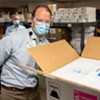
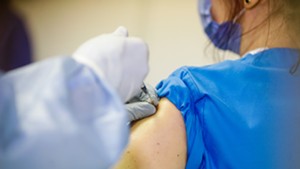
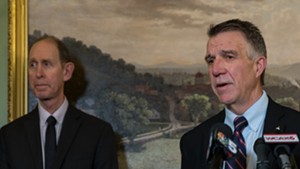
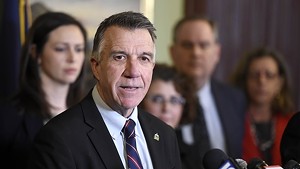
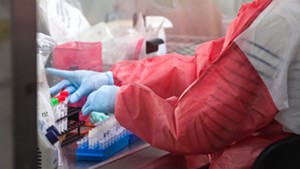






Comments
Comments are closed.
From 2014-2020, Seven Days allowed readers to comment on all stories posted on our website. While we've appreciated the suggestions and insights, right now Seven Days is prioritizing our core mission — producing high-quality, responsible local journalism — over moderating online debates between readers.
To criticize, correct or praise our reporting, please send us a letter to the editor or send us a tip. We’ll check it out and report the results.
Online comments may return when we have better tech tools for managing them. Thanks for reading.